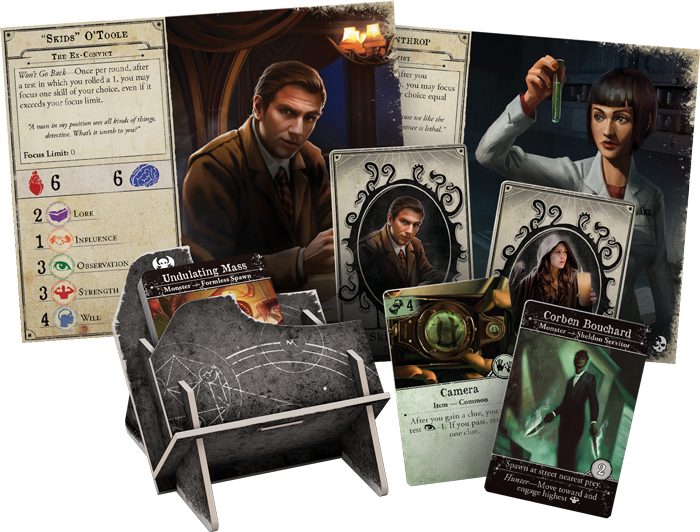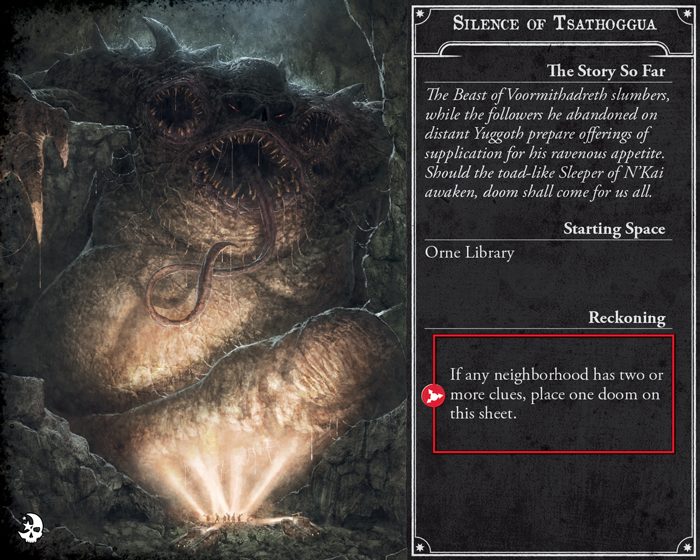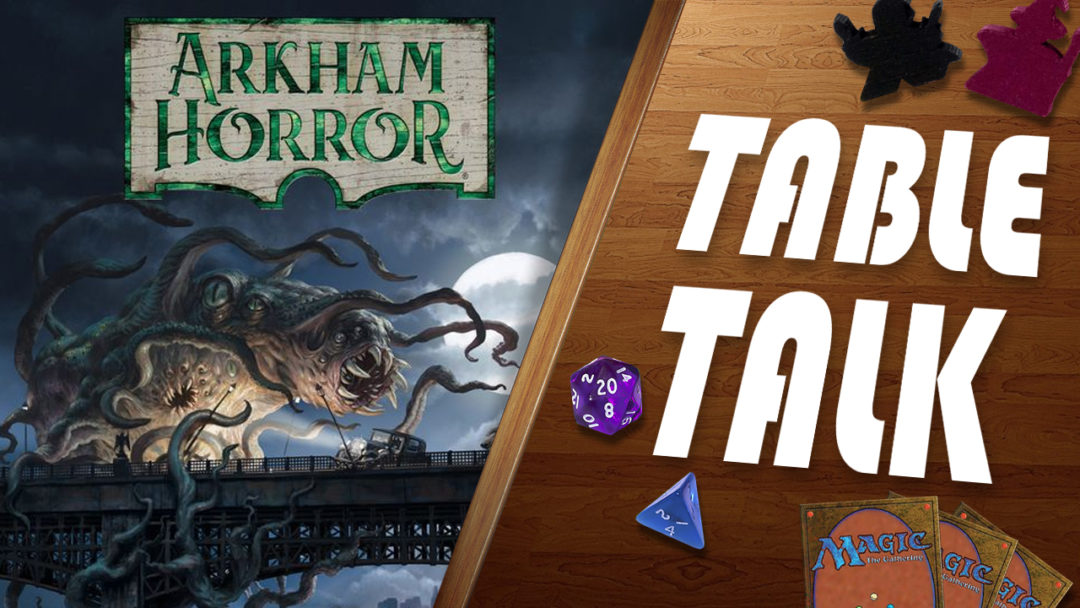It was always clear that Fantasy Flight would continue to expand on Arkham Horror Third Edition, the new, simplifed version of one of its most beloved properties. The first third edition expansion, Dead of Night, released this month and continues the new design philosophy by not shaking things up too much. Mostly it just delivers two new scenarios for players to face, a few highly entertaining new playable characters, and some encounters devoted to exploring the seedy, criminal world of Arkham — because facing monsters from another world isn’t bad enough.
The first two editions of Fantasy Flight’s Arkham Horror games were legendarily complex, often requiring even veteran players to spend an hour setting up the board with tokens so that they and their friends could spend hours more trying desperately to prevent the emergence of Great Old Ones. In November 2018, Arkham Horror Third Edition changed that by significantly streamlining the rules and setup while maintaining the game’s hallmark unsettling humor.
With Third Edition and Dead of Night by association, there are much fewer tokens to place on the starting board, and gates that took players to other worlds have been eliminated. The game also places more emphasis on narrative. Scenario-specific cards allow a story to slowly unravel as players perform different tasks in each scenario to uncover the cause of a threat and figure out ways to keep it at bay or succumb to the horror.
Of Dead of Night‘s scenarios, we tried out Silence of Tsathoggua, a pretty classic Lovecraftian tale where the crablike flying Mi-Go are building strange machines throughout the city to build a bridge through another world and wake a slumbering horror. Like most Arkham games, victory involved gathering clues scattered around the city to get a general gist of what was going on, uncovering the objective to monitor the Mi-Go, disassembling the machines, and researching them in the science building to put a stop to the dark plot.

Of course, our progress was stymied by cultists and horrifying monsters with the ability to injure anyone fighting them both physically and mentally. We also had to contend with a variety of random problems like an approaching comet spreading fear around the city and conflict with the local criminal element that caused our monster-killing mobster to become a wanted man.
“Wanted” is the one truly new mechanic introduced in Dead of Night. It’s basically just a variation on Dark Pact, a negative status card that’s given to a player and just causes them to live in dread until it eventually triggers and causes something bad to happen. In this case, it resulted in the mobster being disarmed and losing his signature Chicago Typewriter. Anyone can become wanted with a bit of bad luck, but it was pretty poetic that the condition just happened to the one character with a criminal past.
I played as one of the new characters, the scientist Kate Winthrop, and was wildly impressed by her effectiveness. She’s a pro at researching, gaining stat boosts when she takes time to study the gathered clues and move them onto the scenario board, which is necessary to trigger the next step in the investigation. She also has some fantastic starting cards that can allow her to modify die rolls instead of re-rolling, which saved me from failure multiple times, and a flux capacitor that can keep monsters from spawning like some 1920s Ghostbuster.

Granted, she was probably made especially with Dead of Night‘s Silence of Tsathoggua encounter in mind, which really solidifies the need to choose your investigators carefully. The mobster is almost always a good pick because someone needs to be able to deal with monsters, and the entertainer who can inspire other players to take extra actions is extremely helpful in letting the players gain momentum. But some of our characters like the dilettante, who walks around with a lot of money, just didn’t prove that useful as she was never able to draw a card that let her actually buy things. There’s always something for a character to do to further the investigation or stem the tide of terror, but actions definitely aren’t created equal.
While the playthrough was certainly shorter than Second Edition games with expansions and required much less explanation to get new players caught up, the gameplay still dragged at times. The game took about three hours with the full six players, and we never really felt like we were on the brink of failure. Instead it just took a lot of turns to gather all the resources and make the checks needed to win. If just one step had been reduced in complexity or removed from the scenario, it would have maintained the feel while leaving us a little time to play something else.
In another change from Second Edition, the new Arkham Horror map varies based on scenario with players building different versions of the city by snapping together specific neighborhoods with connecting streets. It’s a system that’s perfect for bringing in new locations without just expanding the board into a sprawling mess. Dead of Night doesn’t touch the board at all, feeling a lot like a test of the developer’s ability to add just a bit to the game without making it significantly more difficult to learn or play. It succeeds at that, and I’m eager to see what will happen when they get a little more ambitious with further expansions.






Published: Oct 27, 2019 03:28 pm